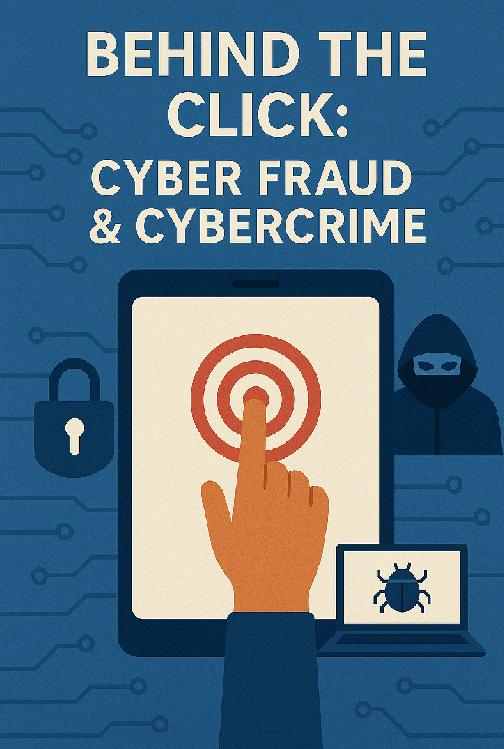How to Unfreeze Your Bank Account Frozen Under Cybercrime Suspicion
Having your bank account frozen under suspicion of cybercrime can be a stressful and financially disruptive experience. Banks and cybercrime authorities take such actions seriously to prevent fraud, money laundering, or other illegal activities. However, if one’s account is frozen due to a misunderstanding or wrongful accusation, there are clear legal and procedural steps to get it unfrozen and restore access. This blog explores how to navigate this sensitive situation effectively.
Why Bank Accounts Get Frozen in Cybercrime Cases
Bank accounts may be frozen when authorities suspect involvement in cybercrimes such as phishing, identity theft, online scams, money laundering, hacking, or fraudulent transactions. Sometimes, even being linked unknowingly to suspicious transactions or complaints by others can trigger the freeze. The freeze is an investigative measure to prevent further illegal movement of funds until authorities verify the facts.
Step-by-Step Process to Unfreeze Your Bank Account
- Contact Your Bank Immediately The first action should be to call or visit the bank branch where the account is held. Request clear information about the freeze, including any legal orders or notices the bank has received. Ask for documentation or communication from the cybercrime cell or police that justified the freeze. Understanding the reason behind the action is crucial for your next steps.
- Consult a Cybercrime Lawyer Engage a lawyer who specializes in cyber law and banking disputes. Although this may involve consultation fees, a knowledgeable advocate can guide the right legal strategy, help communicate with authorities, and avoid pitfalls such as self-incriminating statements or confusion during police inquiries. A lawyer can aid in submitting the proper documentation and petitions to expedite the unfreeze process.
- Cooperate with Cybercrime Investigation If your account is under investigation, cooperate by providing truthful information and requested documents like identity proofs, transaction records, and proofs of legitimate activities. Cooperation strengthens your credibility and often speeds up resolution. However, it is advised to coordinate these with your lawyer to protect your rights. Report the complaint on the National Cybercrime Reporting Portal Helpline Number (1930).
- File a Formal Response or Complaint File a formal written complaint or explanation with the local police cybercrime cell. Include evidence such as bank statements showing normal transactions or proof that you were not involved in suspicious activities. Obtain an FIR or case reference number that acknowledges your complaint, which forms part of the official record.
- Use Bank Grievance Redressal Mechanisms If the bank itself froze the account due to internal suspicion, use the bank’s grievance redressal system. File a formal grievance explaining the situation and request a review. Banks generally respond to grievances within a prescribed period. This step can sometimes lead to faster resolutions if the freeze was placed on weak grounds.
- Approach the Cyber Appellate Tribunal or Courts If all informal and administrative avenues fail, escalate the matter by filing a petition in the relevant court or Cyber Appellate Tribunal. The courts can direct authorities or banks to lift the freeze if it is found unjustified. Filing legal petitions should always be done with professional legal assistance to ensure proper grounds and procedural correctness.
- Monitor Account and Follow Up Track your account status regularly. Sometimes, delays occur due to investigation complexities. Keep regular follow-ups with the bank and your legal advisor until you receive confirmation of the account unfreeze. Staying transparent and persistent is crucial during this stage.
Conclusion
Having a bank account frozen due to cybercrime suspicion is challenging but not insurmountable. Prompt action, effective communication with the bank and cybercrime authorities, and professional legal help form the cornerstone of a successful resolution. Always ensure honesty and cooperation while protecting your rights with legal counsel. Following the outlined steps can lead to clearing the account freeze and restoring financial normalcy as quickly as possible.
FAQs
| Question | Answer |
|---|---|
| Q1: How long does it take to unfreeze a bank account frozen due to cybercrime? | A1: The duration varies depending on the investigation’s complexity, but typically it may take anywhere from 7 to 30 days or longer if legal proceedings are involved. |
| Q2: Can I withdraw money from my account while it is frozen? | A2: No. A frozen account restricts all withdrawals and transactions until the freeze is lifted by legal or banking authorities. |
| Q3: Should I immediately contact the police if my account is frozen for cybercrime? | A3: Yes, but it is essential to consult a cybercrime lawyer before engaging deeply with police investigations to avoid misunderstandings or self-incrimination. |
| Q4: What documents should I prepare to get my account unfrozen? | A4: Prepare your identification proof, bank statements, transaction receipts, correspondence related to the freeze, and any documents proving the legitimacy of transactions. |
| Q5: Is it possible to unfreeze a bank account if the crime was committed by someone else using my identity? | A5: Yes. By providing solid evidence such as identity theft reports and documents proving your innocence, you can use legal channels to get your account unfrozen. |






